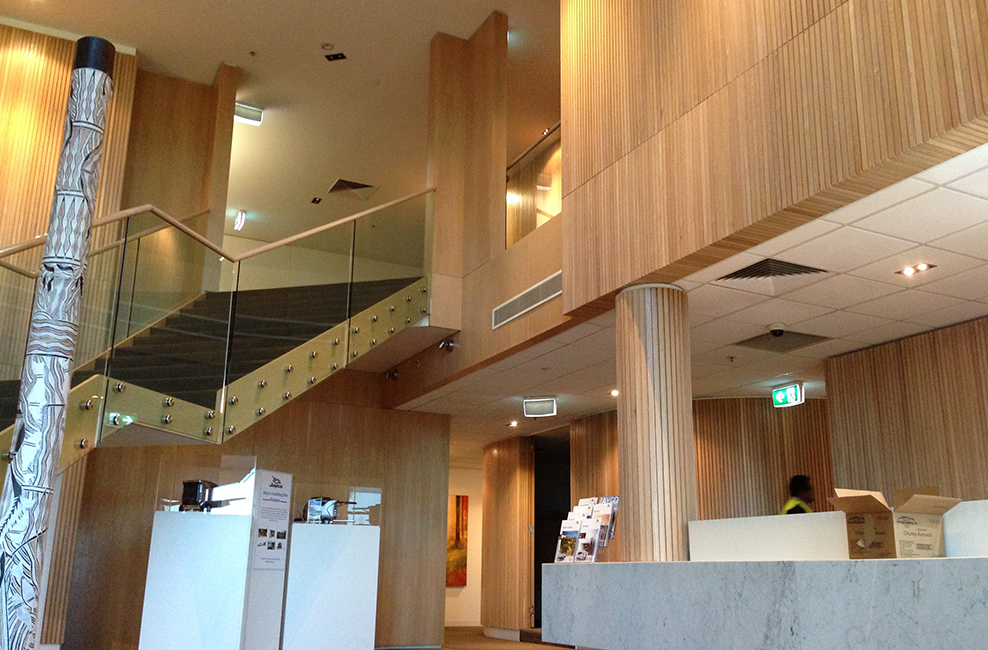Planet Ark conducted an online survey in late 2014 to see what Australian’s attitudes and opinions were towards wood. If you make furniture or cabinets from any wood source, it’s good to know what your customers are thinking. Here we take a quick snapshot.
A literature and empirical studies review and an online survey were conducted late 2014 and released late March last year. It surveyed 1003 Australians aged 14 to 64 and nationally representative in terms of age, gender and location. It was developed with support from Forest and Wood Products’ Australia’s Wood, Naturally Better program. It reviews studies analysing the health and well-being benefits of wooden interiors in homes, business, schools and medical facilities.
It identified improvements to a person’s emotional state and level of self-expression; reduced blood pressure, heart rate and stress; and improved air quality through humidity moderation. Australian’s appear to be drawn towards wood due to feelings of warmth, comfort, relaxation and links to nature but Australian’s are still confused about wood certification. Their general knowledge about the use of wood and its benefits is low.
A Japanese study compared the initial physiological response of 14 people sitting in rooms with either wooden or steel wall panelling. The pulse and heart rate of each subject was measured every second for 20 seconds whilst facing the panelled wall covered by a curtain, followed by 90 seconds with the curtain removed and the wooden or steel panel visible. The study found that exposure to wooden panels significantly decreased the blood pressure of subjects, whilst exposure to steel panels significantly raised it.
An Austrian study examined the heart rates of 30 people who slept in a stone pine bed for three weeks and compared it to their heart rates when sleeping in a wood imitation bed for three weeks. Sleeping in a stone pine bed reduced heart rates by 3500 beats per day compared to when subjects were sleeping in a wood imitation bed. The studies examining the effects of wooden rooms and furnishings clearly demonstrate that the presence of wood has positive physiological effects, lowering blood pressure heart rate and stress responses when compared to other material types.
A New Zealand study presented 69 adults with images of 10 modern corporate interiors, chosen from recently published books showcasing contemporary design. Five of the interiors featured significant amounts of wood, whilst the other five featured no wood at all. Participants were asked to “identify the organisation you would most like to work for”. The presence of wood products within a corporate environment drastically influenced first impressions, with study subjects considerably more likely to want to work for organisations that featured wooden furnishings.
Putting all of this into practice is the Dandenong Mental Health Centre; the largest mental health facility in Victoria, designed by Bates Smart and the Irwin Allsop Group. Natural timber is used extensively in the walls and ceilings throughout the building, both inside and out, to create a residential and suburban feeling. The Martian Embassy in Redfern Sydney is a creative writing centre for young people. The centre is designed to be a fusion between a whale, a rocket and a time tunnel, created by oscillating plywood ribs, red planet light and sound projections in order to provoke fun and unleash creativity. Project partners Will O’Rourke and The Glue Society stated that the warm tones of wood transformed the previously long, dark and unloved shop into a source of inspiration that kids are excited to walk into. The Martian Embassy was a runner up in the Interior Fitout category of the Australian Timber Design Awards.
A common concern raised in regards to the use of wood as a building material is whether or not there is an increased risk of fire. Engineers and fire researchers today have a significant body of knowledge of how timber constructions perform in fire. The structural stability of timber is well understood and importantly it is predictable, allowing timber constructions to be created that meet the same fire safety codes as steel and concrete buildings. This fire resistance increases with the thickness of the wooden elements because when timber is exposed to fire the outer layer burns and turns to char. Charring creates a protective layer that acts as insulation and delays the onset of heating for the cold layer underneath.
In addition to its associated health benefits, the use of responsibly sourced certified wood can have significant positive environmental outcomes and help reduce climate change. Through the process of photosynthesis trees remove carbon from the atmosphere and store it as biomass, mostly wood. Planting more trees will therefore absorb more carbon and help reduce the impact of emissions. When responsibly sourced wood is used as a building material or to create long-lasting products those items become a carbon store, locking carbon out of the atmosphere. Using wood also means that the use of more carbon intensive, non-renewable materials like concrete and steel can be reduced.
One study, for example, identified that the total energy consumption in the manufacturing of steel beams is two to three times higher, and the use of fossil fuels six to 12 times higher, than manufacturing timber beams. In New Zealand it has been estimated that a 17% increase in wood usage in the building industry would result in a 20% reduction in carbon emissions from the manufacture of all building materials, 1.5% of New Zealand’s total emissions.
It seems that yes, wood is good and your customers should know about it. The full report is available online at http://bit.ly/1LgoRcR

